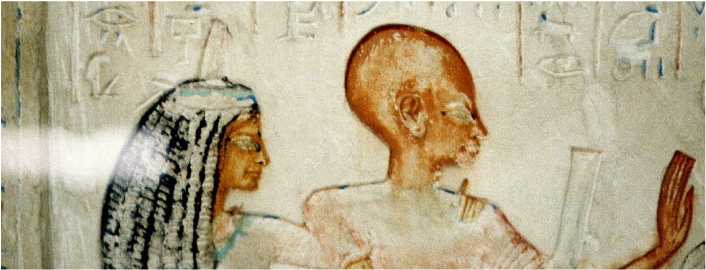(You’re going to have to let me off for using the word “math” in the blog title – “maths” just does not work as a verb).
So this month I’m participating in Bloguary over at Staffrm, which as far as I can fathom involves blogging for 29 minutes a day for each of the 29 days in February. I’ve been somewhat lax at blogging recently (in my defense, I’ve been posting resources instead), so I decided that this would be a nice way of paddling back into the waters of regular writing. I’m happy to say that (hopefully!) at least one of my #summerblogchallenge companions (@DrBennison) is along with me for the journey.
I fancied a theme to help with the inevitable writer’s block, particularly as 29 minutes (and 500 words!) is quite restrictive. Then, while teaching adding fractions today to Year 7, I started digging around for resources on Egyptian fractions and decided that a short history-of-maths-with-classroom-applications project might be the way to go.
Looking for an extension activity today, I found Keep it Simple on NRich, and having a few minutes to spare for once, went digging around on the Surrey University Maths website and found this comprehensive guide to everything about Egyptian fractions. Here’s five things I’ve learnt today:
- Using (mostly) unit fractions allowed the Egyptians to easily represent fractions using hieroglyphs. It’s interesting that you see the numerator over the denominator, like our notation.
- Every fraction (and hence, every rational number) can be expressed as a sum of unit fractions. What’s more, every fraction can be written like this with each denominator a factor of the next denominator (e.g. 4/5 = 1/2 + 1/4 + 1/20 – 2 is a factor of 4, 4 is a factor of 20).
- The Egyptians probably found this method of writing fractions useful because it keeps portion sizes as large as possible – for example, dividing 3 loaves of bread between 5 people allows pieces of size 1/2 + 1/10 to be given out. Furthermore, it makes comparing fractions easier – remember that there were no decimal equivalents at this time!
- Paul Erdös (he of “a mathematician is a device for turning coffee into theorems” fame) and E.G. Straus conjectured in 1948 that every fraction in the form 4/n can be written as a sum of three unit fractions – this is still unsolved, which is always exciting. There’s some difficult related maths here.
- An uncredited source here suggests that the rather pleasant triple fraction (3+) 1/13 + 1/17 + 1/173 may have been used to approximate pi to four decimal places – I’d be interested to find out how true this actually is!
I’ll pop some resources up in the next few days based around these ideas, and I’m certainly going to give the NRich puzzle a try with a couple of other classes. Lots of scope here for investigating further or just jazzing up basic practice.
(Header image: “Ipuia” by Udimu – Own work. Licensed under CC BY-SA 3.0 via Wikimedia Commons – https://commons.wikimedia.org/wiki/File:Ipuia.JPG#/media/File:Ipuia.JPG)
